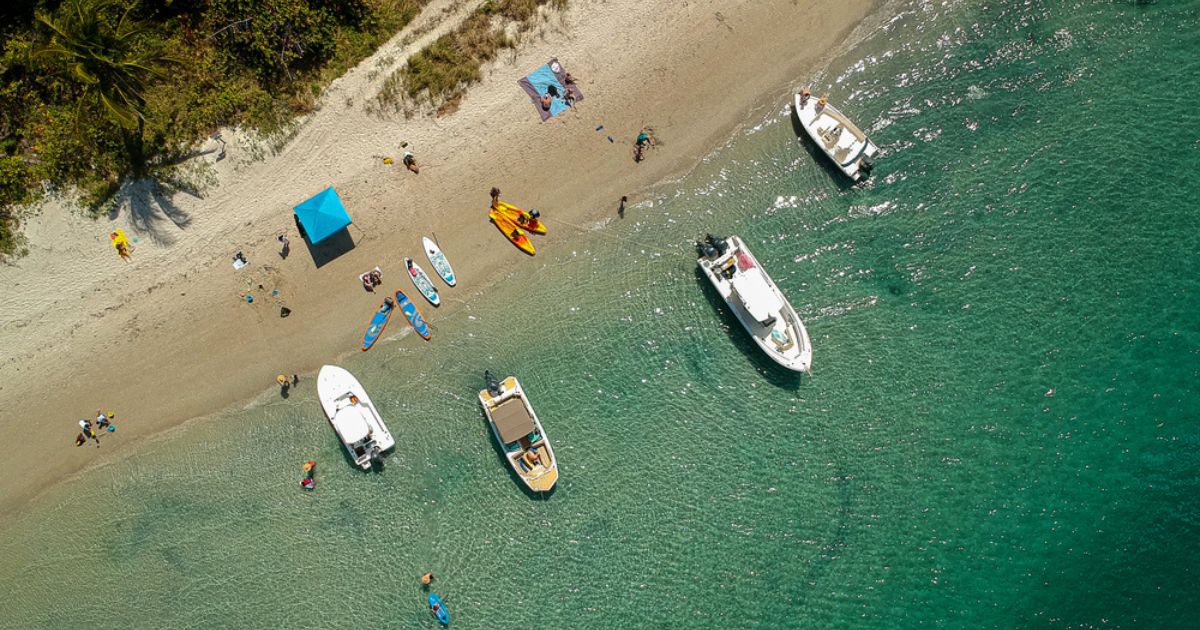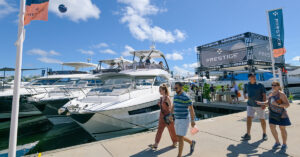As an avid boater, there will consistently be moments where proper docking is not an option or necessary for what you want. Beaches and sandbars can be lots of fun, but improperly docking your boat to the sandbar or otherwise beaching your boat so that you can’t leave is definitely the opposite of fun.
Veterans that already know the ropes of docking at a sandbar generally will understand the fundamentals, but it’s never a bad idea to have a refresher. For boaters that are a little more green, this blog walks through what you should know when you intend to “dock” your boat at a sandbar.
Always Think About Setting Up So You Can Leave
When you have your mind set on anchoring at a sandbar, you should already be thinking about your exit strategy for when you’re ready to leave. Don’t let visions of the fun you’re going to have at the sandbar or beach get in the way of the diligence needed to set up your boat properly for a clean departure.
In general, keep these things in mind:
- Take Your Time — This isn’t a process you want to rush, no matter how eager you and your family or friends are to get ashore. You don’t need much momentum to get the position you need. Too much momentum can get you in a rough spot if your boat moves too close to the sandbar.
- Be Careful of an Exposed Stern — Approaching and situating the boat so the bow is facing the sandbar can sometimes work in perfect conditions (where the tide is incoming and the waves are minimal), but an exposed stern can easily be swamped in less favorable conditions. Sure, you can set your anchor on the beach as the keel nudges the sandbar, but this is risky. There is a better option (see below).
- Do a 180 — Once your boat is close to the sandbank (bow first) and the water is roughly at your knees (you’ll need more space for larger boats), turn the boat 180 degrees so that the stern faces inland. Get a first anchor set as deeply in the water as possible. Afterwards, drop two stern anchors (or tie your boat to sand spikes in lieu of anchors if needed). This will prevent your boat from going parallel to the beach or being overly susceptible to changes in waves or the tide.
- Deploy your fenders — It’s advisable that you wait until the boat is anchored before tying your inflatable fenders. You can then tie them with a clove or slip hitch. Try to tie them so that they’re not touching the water, but also low enough so that nearby boats won’t rub against your boat and potentially damage the hull. As you’re anchoring, you can have someone manning the fender line, but wait until the anchoring is finished before securing the fender. Deploy your fenders on both sides of the boat.
Be Aware of Tides and Know Your Own Boat
Knowing the tide (incoming or outgoing) will give you a better indication of how much space your boat will need for anchor. You don’t want to wind up in a situation where the boat gets trapped on the sand or begins to drift off too far from shore. The size of your boat will also play a factor in how much space to give yourself, so you’ll need a firm grasp of how your boat maneuvers before you get away from standard docking. You should also be aware of weather patterns and wind changes, which can affect waves and the positioning of your boat at anchor. You don’t want to be in a situation where you must request towing assistance, which can easily happen when the tide isn’t respected.
Have Fun with Peace of Mind
The more diligent you are with anchoring, the less you’ll worry. The less you worry, the more fun you and your family and friends can have when you’re finally ready to go ashore and enjoy yourselves. Remember to go slow, stay aware, and be diligent in your anchoring and you’ll be ready for any sandbar adventure.









